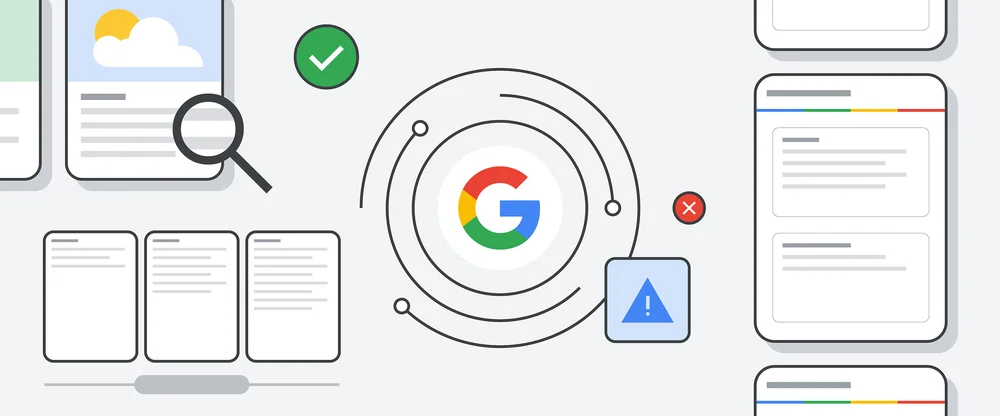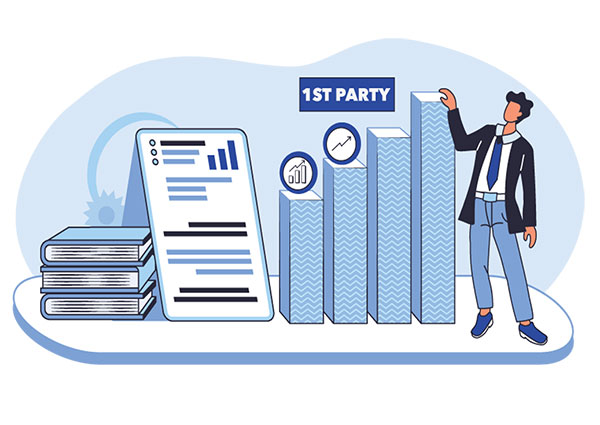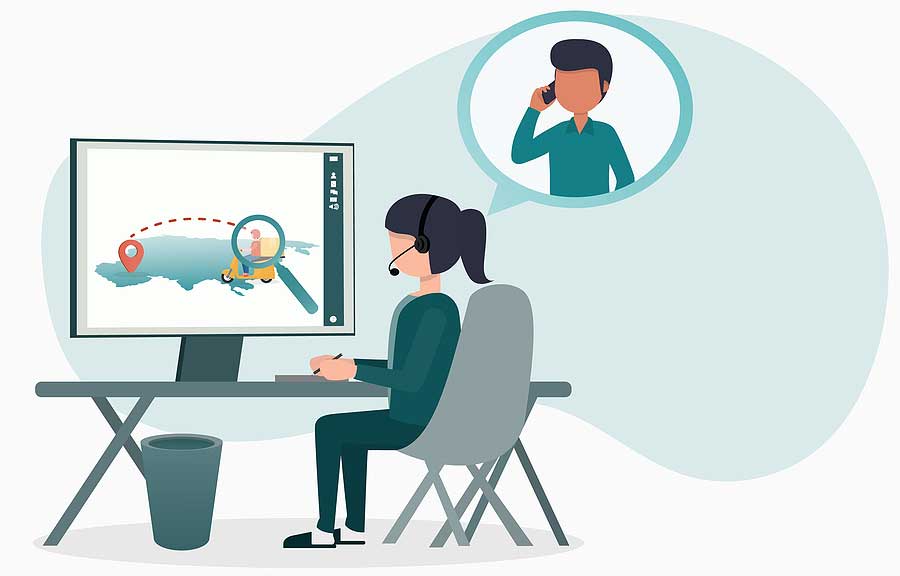In recent years, the digital marketing landscape has changed significantly due to evolving privacy regulations and the phasing out of third-party cookies. To adapt, businesses must now leverage first-party data for personalized and effective marketing campaigns. This comprehensive guide discusses the challenges associated with this shift, the benefits of first-party data, and the steps to create a successful first-party data strategy.
Understanding the Changing Privacy Landscape
The decline of third-party data can be attributed to several factors, including shifts in consumer perception about data privacy, privacy regulations like GDPR and CCPA, and major tech companies (e.g., Google and Apple) implementing privacy changes. These changes create challenges for advertisers, such as inefficient targeting, measurement and attribution issues, and difficulties in monitoring reach and frequency.
The Value of First-Party Data
Despite these challenges, first-party data offers several advantages over third-party data:
1) Accuracy: Data collected directly from customers is typically more accurate and reliable.
2) Relevancy: First-party data provides insights specific to your audience, making it more relevant for marketing purposes.
3) Availability: Companies often already possess first-party data, making it readily accessible.
4) Cost-effectiveness: Acquiring and managing first-party data can be more cost-effective than purchasing third-party data.
How to Leverage First-Party Data
To successfully utilize first-party data, businesses should:
1) Segment their audience based on demographic, behavioral, and preference data.
2) Increase efforts to generate first-party data through various touchpoints like websites, social media, email, and CRM.
3) Prioritize profitability and form alliances with other companies to capitalize on combined data.
4) Personalize marketing campaigns and obtain customer consent.
Essential Elements of a Successful First-Party Data Strategy
To create an effective first-party data strategy, consider the following:
1) Develop a robust infrastructure for first-party data and MarTech integration.
2) Utilize first-party data effectively for digital activation, measurement, and attribution.
Overcoming Challenges and Creating an Implementation Roadmap
Companies often face hurdles when using first-party data for digital marketing, including organizational and data silos, lack of in-house competencies, and inadequate full-funnel activation strategies. To overcome these challenges and create a successful implementation roadmap, consider the following steps:
Step 1: Create a First-Party Data Plan
1) Dissolve organizational and data silos by centralizing data storage.
Breaking down barriers between departments and unifying data storage helps organizations access and share valuable first-party data more easily. Centralizing data storage reduces fragmentation, promotes collaboration, and enables a comprehensive view of customer data, ultimately leading to more informed decision-making.
2) Develop a first-party data strategy, including identifying data sources and opportunities for building data.
Creating a first-party data strategy involves determining which data sources to prioritize (e.g., website analytics, CRM systems, and email engagement) and seeking opportunities for data collection and growth. This process helps align the organization’s goals with its data acquisition and management practices, ensuring a strong foundation for leveraging data in marketing efforts.
3) Analyze first-party data for insights into customer behavior, preferences, and demographics.
Examining first-party data provides valuable insights into customer behavior patterns, preferences, and demographic information. This analysis allows businesses to identify trends, uncover new opportunities, and tailor their marketing efforts to better resonate with their target audience.
4) Define target audiences and create personalized campaigns.
Based on the insights gained from analyzing first-party data, businesses can define specific target audiences and develop personalized campaigns. This segmentation and customization allow for more relevant and engaging marketing communications, resulting in higher conversion rates and improved customer loyalty.
5) Measure campaign success using key performance indicators (KPIs).
Tracking the success of marketing campaigns is crucial for optimizing strategies and maximizing return on investment. By establishing key performance indicators (KPIs) such as click-through rates, conversion rates, and customer lifetime value, businesses can evaluate their efforts and make data-driven decisions for continuous improvement.
6) Keep data up-to-date through regular cleaning and updates.
Maintaining accurate and current first-party data is essential for ensuring the effectiveness of marketing efforts. Regular data cleansing and updates help to remove outdated information, correct inaccuracies and identify gaps in the data. This process ensures that businesses have access to high-quality data for informed decision-making and more impactful marketing initiatives.
Step 2: Establish a Data Infrastructure
1) Invest in data management tools, such as data warehousing, data integration, and data visualization.
Investing in robust data management tools is crucial for organizing, storing, and processing first-party data efficiently. Data warehousing solutions enable businesses to store large volumes of data from various sources in a single, central repository.
Data integration tools help streamline the process of combining data from different sources, ensuring consistency and accuracy, while data visualization tools allow marketers to present complex data in an easily digestible format, facilitating better understanding and decision-making.
2) Implement data security measures, including access controls, encryption, and data backups.
Securing first-party data is essential for protecting customer privacy and maintaining regulatory compliance. Implementing access controls helps restrict data access to authorized personnel, reducing the risk of unauthorized use or data breaches. Encryption safeguards sensitive information by converting it into an unreadable format, which can only be deciphered with a decryption key. Regular data backups ensure that businesses can recover crucial data in the event of system failures or data loss incidents.
3) Integrate data infrastructure with marketing tools, such as CRM systems and marketing automation platforms.
Integrating data infrastructure with marketing tools enables businesses to streamline marketing processes and leverage first-party data effectively. Connecting CRM systems and marketing automation platforms to data infrastructure allows for seamless data exchange and ensures that customer information is up-to-date across all systems. This integration facilitates targeted and personalized marketing campaigns while also enabling better tracking and analysis of campaign performance.
4) Use data analytics to gain insights from first-party data.
Applying data analytics techniques to first-party data helps businesses uncover valuable insights, such as customer preferences, purchasing habits, and demographic information. These insights can inform marketing strategies and enable businesses to make data-driven decisions that improve campaign effectiveness, customer engagement, and overall marketing ROI.
5) Monitor and optimize data infrastructure regularly.
Regular monitoring and optimization of data infrastructure are necessary for maintaining data quality, ensuring system performance, and identifying areas for improvement. By keeping a close eye on data storage, processing, and integration, businesses can proactively address potential issues and optimize their data infrastructure for maximum efficiency and effectiveness in marketing efforts. This ongoing maintenance also helps businesses stay agile and adapt to changing market conditions and customer needs.
Step 3: Develop or Improve Capabilities
1) Evaluate your current platform
Assessing your current data management and marketing platforms is the first step in optimizing your first-party data marketing efforts. This evaluation involves examining the capabilities, features, and limitations of your existing tools, as well as identifying any gaps or redundancies. A thorough assessment helps determine whether your current platform aligns with your marketing objectives and allows for efficient first-party data management, analytics, and execution.
2) Identify your business goals
Clearly defining your business goals is essential for developing a successful first-party data marketing strategy. These goals may include increasing customer acquisition, improving customer retention, driving more revenue, or enhancing customer satisfaction. By identifying specific objectives, businesses can align their data marketing efforts with their overall goals, ensuring that data initiatives contribute to the organization’s growth and success.
3) Invest in data science
Investing in data science enables businesses to extract valuable insights from their first-party data and make data-driven decisions. Data science combines statistical analysis, machine learning, and artificial intelligence to uncover patterns, trends, and relationships within large volumes of data. By investing in data science capabilities, either by hiring data scientists or partnering with external experts, businesses can leverage their first-party data more effectively and enhance their marketing strategies.
4) Leverage sophisticated analytics
Utilizing advanced analytics techniques helps businesses gain deeper insights from their first-party data, enabling more targeted and personalized marketing campaigns. Sophisticated analytics methods, such as predictive modeling and segmentation, allowing marketers to identify customer preferences, anticipate future behavior, and tailor their messaging accordingly. By leveraging these advanced analytics techniques, businesses can improve their marketing ROI and build stronger customer relationships.
5) Use a Customer Data Platform (CDP)
A Customer Data Platform (CDP) is a software solution that centralizes and unifies first-party customer data from multiple sources, creating a single, comprehensive view of each customer. CDPs enable businesses to better understand their customers, segment their audiences, and deliver personalized marketing experiences across various channels. By implementing a CDP, businesses can streamline their data management processes, improve data quality, and enhance their ability to leverage first-party data in their marketing efforts.
Step 4: Work on the first-party data.
1) Effectively activate first-party data
Activating first-party data involves leveraging the data you have collected about your customers to improve your marketing efforts. This can include using data to create personalized messaging, targeting specific audiences, and optimizing campaigns. For example, if you have data about a customer’s past purchases, you could use it to recommend similar products or services to them.
2) Prioritization and personalization through segmentation
Segmenting involves dividing your audience into smaller groups based on common characteristics or behaviors. By segmenting your audience, you can prioritize your marketing efforts and personalize your messaging to each group. For example, if you sell clothing, you could segment your audience based on gender, age, or shopping habits and tailor your messaging and promotions to each group.
3) Full-funnel approach
A full-funnel process involves targeting customers at each stage of the buying journey, from awareness to purchase and beyond. This consists in creating messaging and campaigns tailored to each funnel stage and using data to track customer behavior and optimize campaigns accordingly. For example, you could create awareness campaigns to attract new customers, retargeting campaigns to re-engage customers who have shown interest, and loyalty campaigns to reward and retain existing customers.
4) Use AI/ML for a more advanced strategy (for example, predictive audiences)
AI and ML can analyze first-party data and identify patterns and insights that may not be immediately obvious. This can help you to create more targeted campaigns and improve the effectiveness of your marketing efforts. For example, you could use AI to analyze customer behavior and identify patterns that suggest a customer is likely to make a purchase soon and use this insight to create a predictive audience for targeted campaigns.
Dream Warrior Group, a Los Angeles Based web design and digital marketing Company, providing solutions for your online marketing needs. Our experts will assist you in integration of the tools you need to ensure a smooth transition. Call us now at 818.610.3316 or click here.





